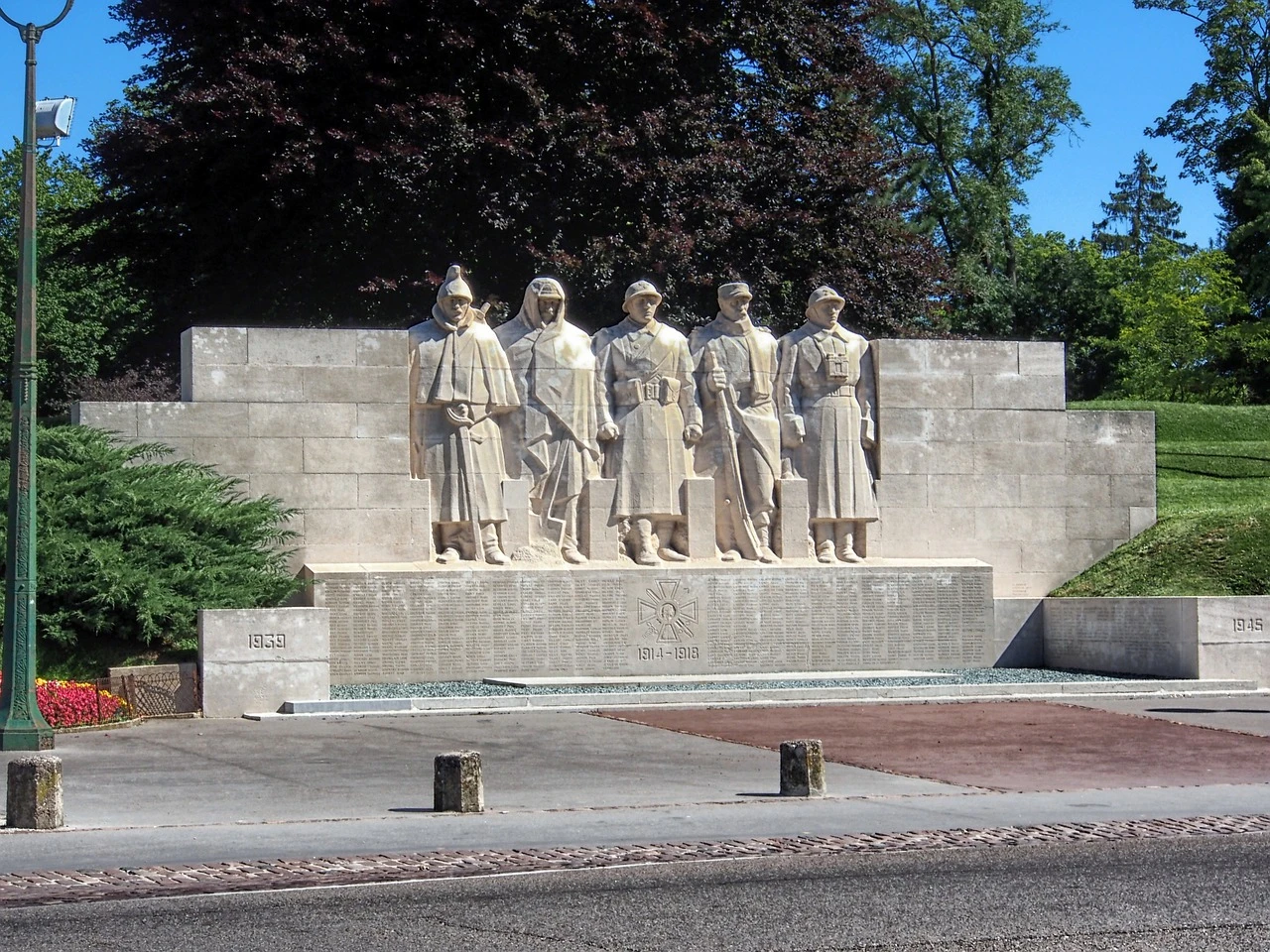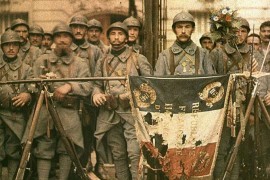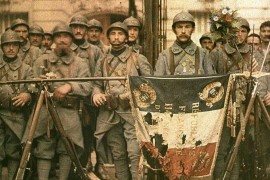A nation shaped by remembrance
The First World War claimed more than 9,000,000 lives worldwide. France , for its part, lost over 1,400,000 soldiers at the Front during the 52 months of war, and had 4,000,000 wounded at the time of the armistice that ended the war on November 11, 1918, in a wagon in the forest of Rethondes. Of all the belligerent countries, France was proportionally the hardest hit, losing an average of 900 soldiers a day during the conflict. In fact, an entire generation was swept away by the war. Not one family did not see the mayor or the letter carrier pass by with the terrible news of the death of a loved one: son, father, cousin, friend... The battlefields were numerous, from the North to the East, and many soldiers were hastily buried during the fighting around Verdun, the Chemin des Dames... Some bodies were never found. Others were never identified. After the war, the remains were grouped together in necropolises not far from the former battlefields. For the families, often far from these places where they could pay their respects, there are no graves to bloom, and it is not possible to repatriate to the village the body of the soldier the family lost in the fighting.
And few graves to gather in
It was shortly after the end of the war that an idea emerged. To build a place where families could gather while the body of their loved one was far away or had not yet been found. A place that would bear the names of the commune's war dead. The idea is not completely new. There were already a few erected after the 1870 war, notably in Montauban, Vernon, Alberville, Aurillac... The oldest war memorial is thought to date back to the 17th century. It is the Porte Desilles in Nancy, originally dedicated to the people of Nancy and Lorraine who died alongside the Insurgents during the War of Independence. What's new is that almost every commune in France will have a war memorial. Few don't have one. Either they didn't have the means to do so, or there were no deaths for France in the commune (this has happened. Very rarely, but it has happened, for example at Thierville in Normandy).
The war memorial in Lignières-Orgères, Mayenne. Under the plinth is inscribed "On ne passe pas". Photo chosen by monsieurdefrance.com: Jérôme prod'homme (c)
By subscription, 35,000 monuments were erected in 7 years.
Although the State contributes through subsidies, war memorials are erected by subscription. In other words, it's the French who give money to their communes to build the monument. In the 7 years between 1918 and 1925, almost all of France's 35,000 war memorials were completed.
All shapes, sizes and messages.
They are often located in the heart of the commune.The smallest is in Cordey, Normandy. The largest is the Monument aux Parisiens morts pour la France. Located in the Père Lachaise cemetery, it commemorates the sacrifice of 94,415 Parisians and 4,000 missing. Some are obelisk-shaped, encircled by shells and a chain. Others feature a statue. France, the Fatherland, a soldier (and his dog, as at Pagny sur Moselle, in Lorraine, where the soldier is accompanied by a dog that the children of the time called "totoche"). Some monuments feature a woman holding a body, as at Metz in Lorraine, where a naked soldier lies in the arms of the Fatherland. Most are engraved with the names of local soldiers who fell in the war. The name of the commune and "à ses enfants morts pour la France" (to its children who died for France) are often engraved. In Alsace and Moselle, it's more likely to read "to our dead", as these regions were annexed by Germany in 1871 and had to fight on the German side.
Messages too.
Some monuments to the dead are said to be "pacifist " because they are engraved with a message against war, such as the one in Gye l'Evêque, on which is inscribed "guerre à la guerre" ("war against war "), or the one in Saint Martin le beau, which is inscribed "aux victimes de la guerre" ("to the victims of war"). In Eguzon-Chantôme, the monument features a quotation from the poet Horace, "Mothers hate war", while the one in Balnot sur Laignes reads "War be damned" .
These monuments to the dead from the First World War have continued to be dedicated to those who died for France in other conflicts, such as the Second World War and the Algerian War. It is in front of these monuments that the communes gather around the mayor at the time of the commemorations of the armistices of 1918, on November 11 and 1945, on May 8. A speech is given. The names on the monument are read out, and the words "died for France" are spoken. Traditionally, the Marseillaise is sung at the end of the ceremony.
The Verdun war memorial. It takes on a very strong meaning in this town whose name sounds like a war within a war, since the Battle of Verdun meant 300 days and 300 nights of fighting and 163,000 French soldiers dead or missing (143,000 on the German side). Photo chosen by monsieurdefrance: depositphotos







